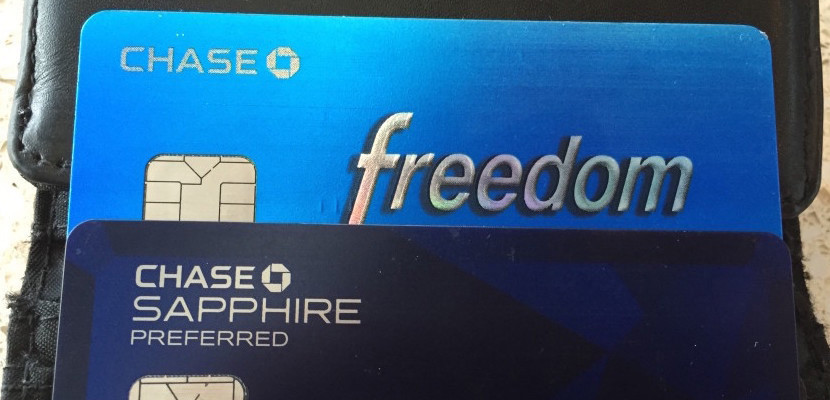
You might also like:
Recently, the new Chase Freedom Unlimited Card became available for online applications, whereas previously you could only apply at a Chase branch. Now that this no-fee card is more accessible, you may be wondering how — and if — it fits into your award travel strategy. To help you sort that out, here’s a look at when it does and does not make sense to use this product for purchases.
First thing’s first: The Chase Freedom Unlimited Card is currently offering a sign-up bonus of $150 after you spend $500 in the first three months of account opening. As for the product itself, it’s similar to the Chase Freedom Card in that it offers cash back on all purchases and charges no annual fee. However, the Unlimited earns you 1.5% cash back on everyday spending and doesn’t have any bonus categories that will net you higher returns, while the original Chase Freedom offers 1% cash back on non-bonus spending but 5% back on up to $1,500 in combined spending each quarter on pre-designated bonus categories.
So while the Chase Freedom is a no-brainer when it comes to purchases in these categories (from April to June, you’ll earn 5% back on grocery store and wholesale club purchases), the Freedom Unlimited makes sense for spending where you wouldn’t otherwise earn a category bonus, since you’ll get a maximum of 1.5% cash back no matter what or where you buy.
Now that we have the main differences between these two products out of the way, it’s time to touch on another important factor to consider when using either of these cards. The Chase Freedom and Chase Freedom Unlimited aren’t simply cash-back cards, they earn points that can be transferred to a variety of travel partners — provided you hold a higher-end card like the Chase Sapphire Preferred or the Ink Plus Business Card.
So, based on the above conditions, 1.5% cash back on all purchases with the Chase Freedom Unlimited equals 1.5 Ultimate Rewards points per dollar — a 3.15% return based on TPG’s latest valuations. (This also means you’ll get a 10.5% return on bonus category spending with the original Chase Freedom.) Note that you don’t need one of these more expensive cards to start earning Ultimate Rewards points; you just need to hold one when you want to transfer points to Hyatt, United or other partners. Meanwhile, if you don’t also have a card that earns Ultimate Rewards points, the Freedom cards simply earn cash back that you can redeem to offset any purchases.
With all that in mind, when should you use the Chase Freedom Unlimited Card to get the best return on your spending?
When It Makes Sense: Earning UR Points on Everyday Spending

If there’s one clear use case for this card, it’s non-bonus-category spending — things like shopping at most retail stores, purchasing appliances or paying your taxes. In terms of return on everyday purchases, the Freedom Unlimited and its 3.15% return beats out even the Starwood Preferred Guest Credit Card from American Express, which offers 1 point per dollar on non-bonus purchases — worth 2.5 cents according to TPG’s valuations.
However, to get the 3.15% return from the Chase Freedom Unlimited, you need to hold (or plan to hold) an Ultimate Rewards-earning card like the Chase Sapphire Preferred or the Ink Plus Business Card. Otherwise, you won’t be able to transfer to Chase’s 10 travel partners; your rewards will be limited to flat cash back or points worth one cent each toward merchandise, gift cards or travel reservations made through the Ultimate Rewards travel portal. So without a UR-earning card enabling you to transfer rewards from your Chase Freedom Unlimited to a partner, you’d be getting a more meager return of 1.5%.
When It Doesn’t Make Sense: Earning Cash-Back Rewards, Bonus Category Spending
Sure, 1.5% cash back on all purchases is better than nothing, but you can do better — which is why you shouldn’t use the Chase Freedom Unlimited as a strictly cash-back card. For example, the Citi Double Cash Card earns you 1% back on everything at the time of purchase, plus another 1% back when you pay your bill. For other options, see TPG Contributor Nick Ewen’s post on the best cash-back cards for 2016.
The Freedom Unlimited Card’s strong point is 1.5% cash back (or 1.5x Ultimate Rewards) on every purchase, but it can’t compete when it comes to bonus category earning potential since it offers no elevated categories of its own. Even among cash-back cards, there are several better choices than the Freedom Unlimited when it comes to expenses that earn bonus points or cash back, including the previously mentioned Chase Freedom. There’s also the Discover it Card, which, like the Freedom, earns you 5% cash back on up to $1,500 in purchases in rotating quarterly categories and even earns you double cash back on everything during your first cardmember year.

As for non-cash-back cards that earn you the best return on bonus category spending, the list is long. Here are some of the highlights for each category:
Bottom Line
The Chase Freedom Unlimited Card can be a great option for everyday spending — especially when you can earn 1.5x Ultimate Rewards on everything — but it isn’t necessarily the best option for cash-back rewards or bonus category spending. This no-fee card could definitely be worth a space in your wallet, but make sure to evaluate when it will get you the best return on purchases.
Source: thepointsguy.com
